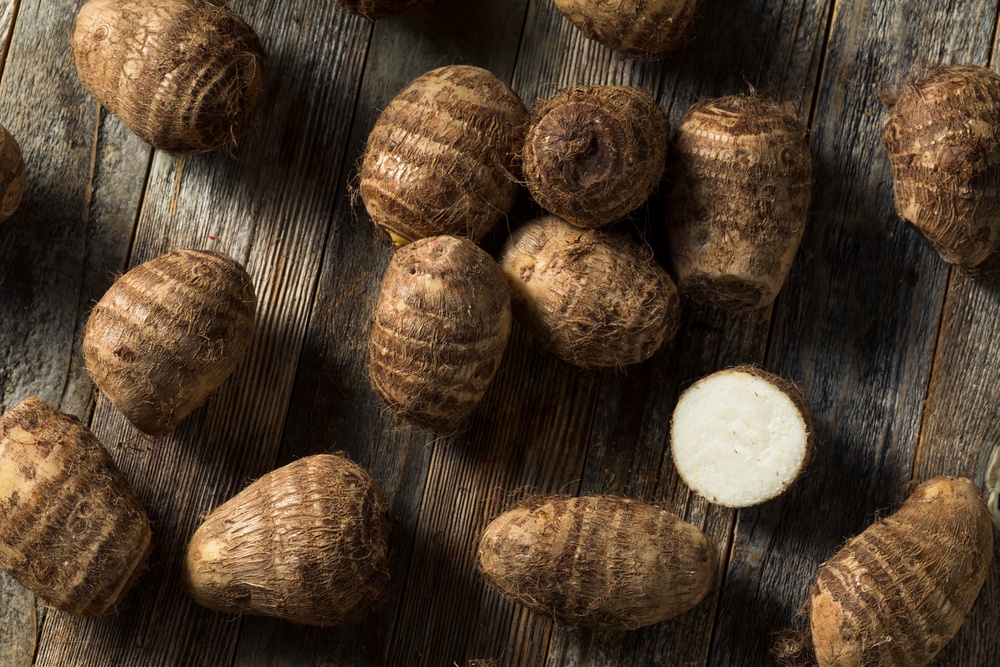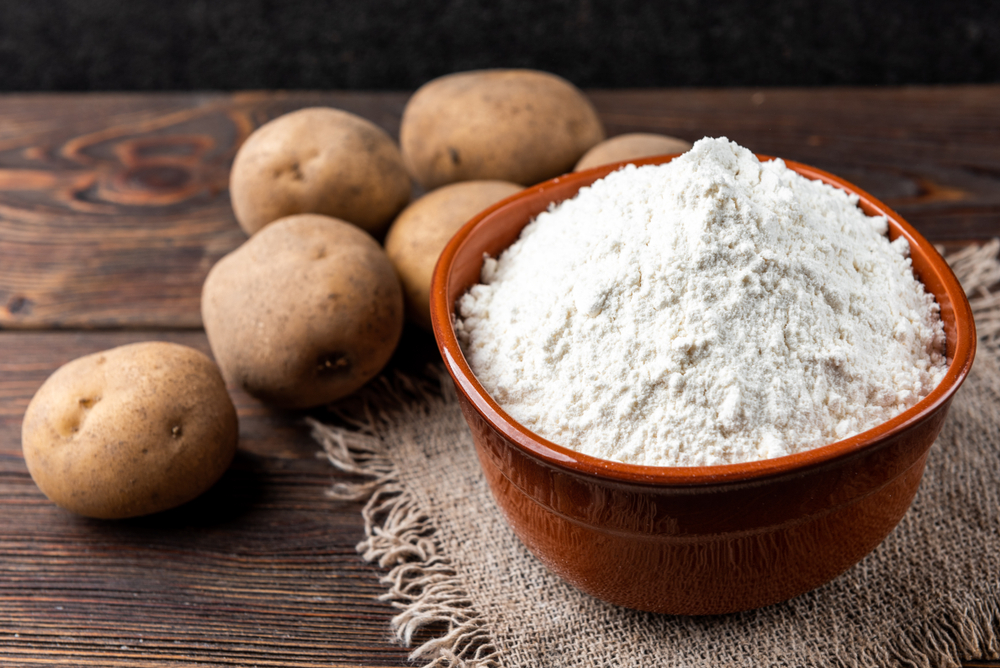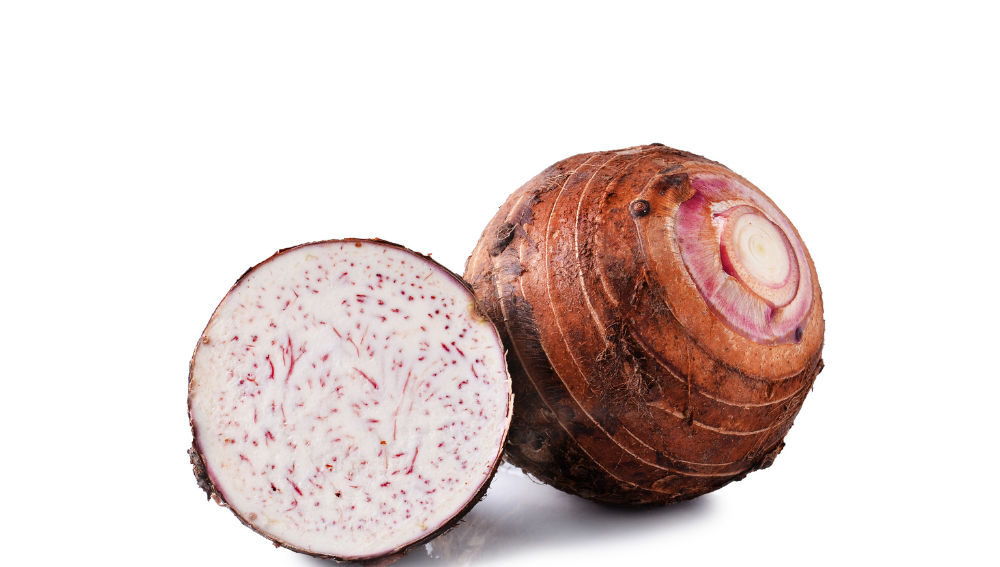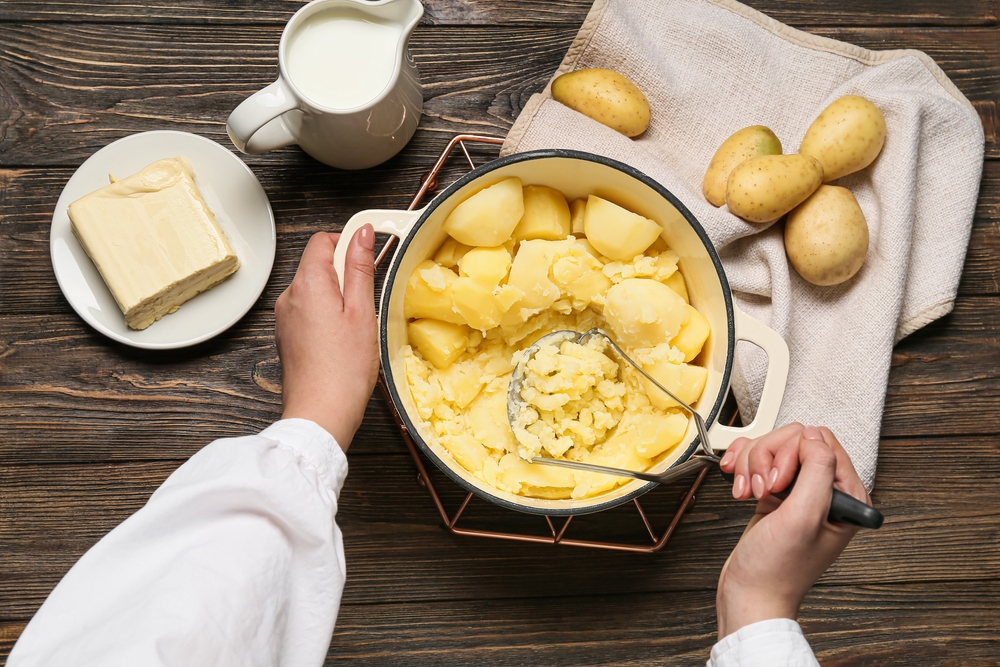I have always been curious about the taste of yuca, also known as cassava. This root vegetable is a staple in many countries, including South America, Africa, and Asia. Yuca is a versatile ingredient that can be boiled, fried, mashed, or baked. It is used in a variety of dishes, from savory stews to sweet desserts.
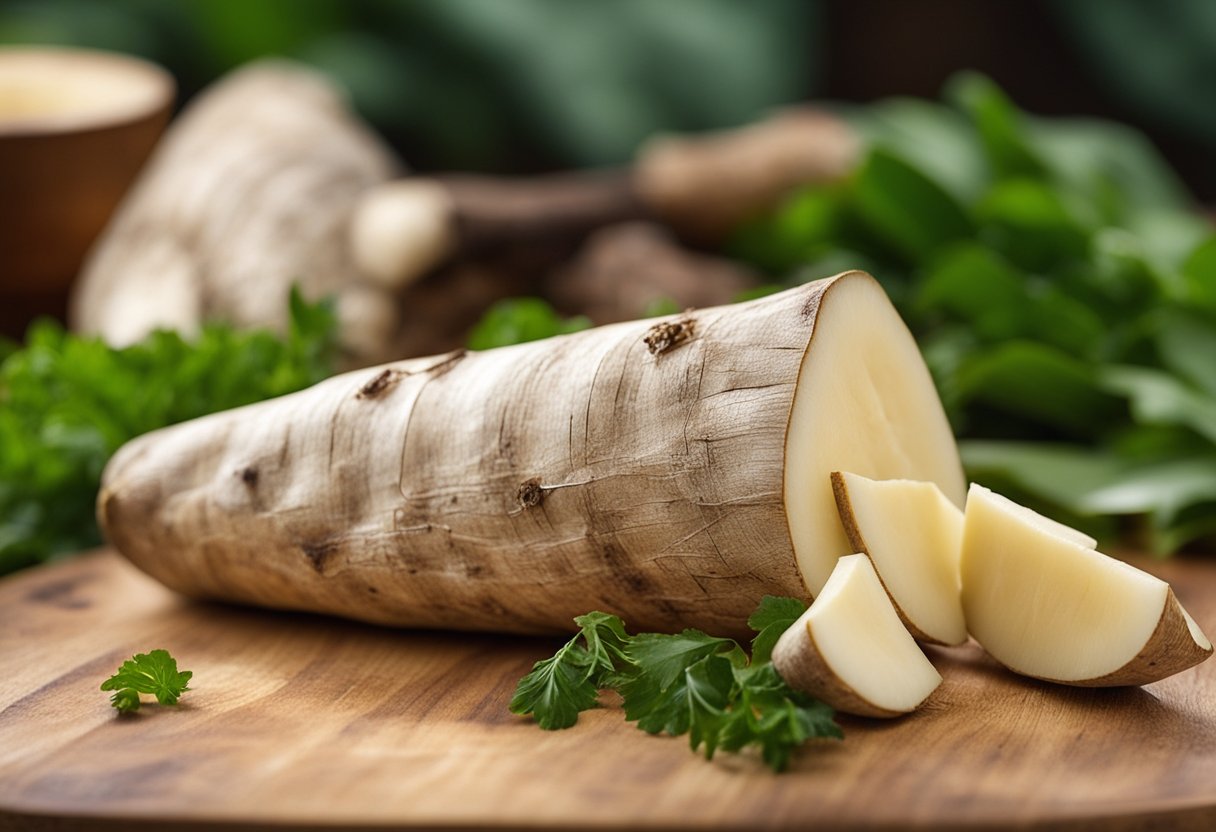
Understanding Yuca is important before discussing its taste profile. Yuca is a starchy root vegetable that is similar in appearance to a sweet potato. It has a rough, brown exterior and a white, fibrous interior. Yuca is often confused with yucca, a desert plant that is not edible.
Yuca is a popular ingredient in gluten-free and grain-free diets because it is high in carbohydrates, low in fat, and rich in fiber. Yuca is also a good source of vitamins and minerals, such as vitamin C, vitamin B6, and potassium.
Key Takeaways
- Yuca is a starchy root vegetable that is similar in appearance to a sweet potato.
- Yuca has a mild, nutty, and slightly sweet taste with a creamy texture.
- Yuca is a versatile ingredient that can be used in a variety of dishes and is a good source of vitamins and minerals.
Understanding Yuca
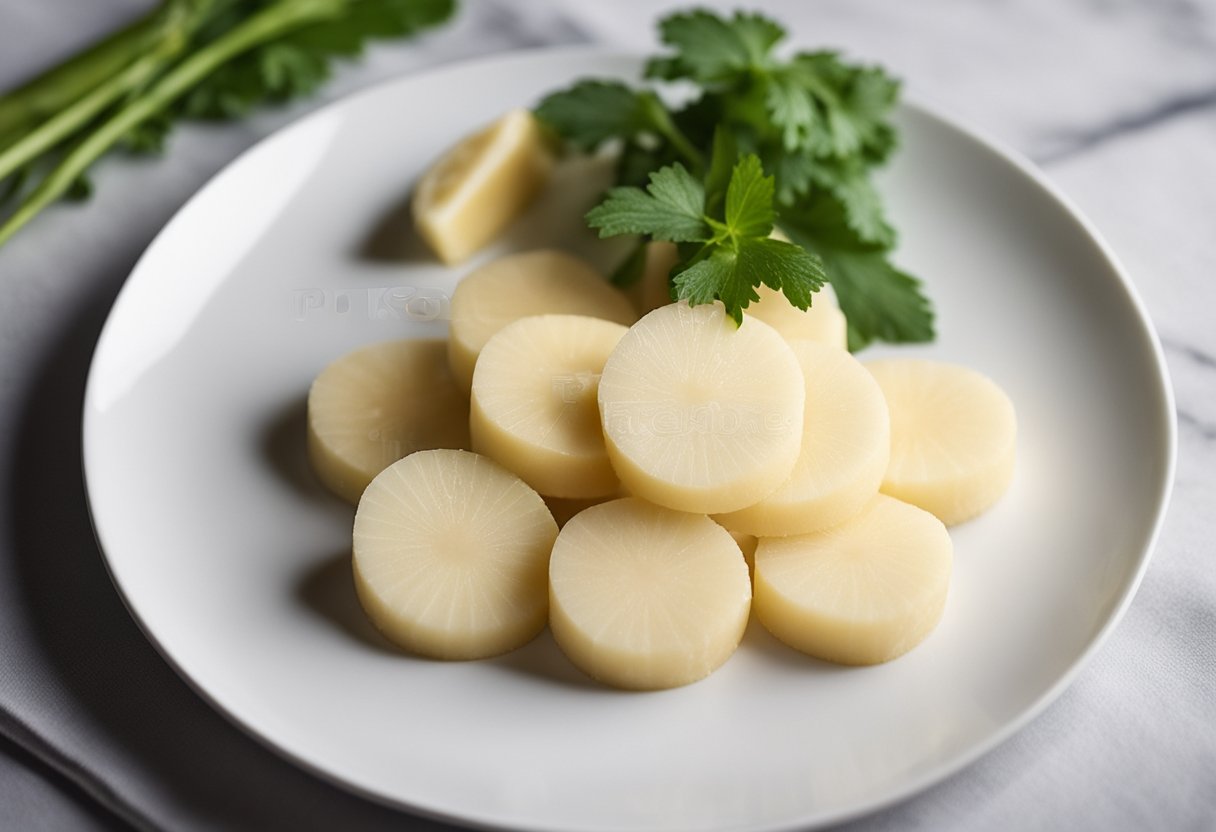
As someone who has been cooking with yuca for years, I can confidently say that it is a versatile and delicious root vegetable that is a staple food in many parts of the world. Yuca, also known as cassava or manioc, comes from the cassava plant and is a popular ingredient in Latin American, African, and Asian cuisine.
Yuca is a starchy root vegetable that looks similar to a sweet potato or yam, but has a tougher, brown skin. The flesh of the yuca root is white and has a slightly fibrous texture. When cooked, it has a nutty, earthy flavor that is often compared to that of a potato or chestnut.
One of the great things about yuca is that it is incredibly versatile. It can be boiled, fried, baked, or mashed, and can be used in both sweet and savory dishes. Yuca is also a great source of carbohydrates, fiber, and vitamins, making it a healthy addition to any diet.
While yuca is a popular ingredient in many parts of the world, it can be a bit intimidating for those who have never cooked with it before.
The tough, brown skin can be difficult to peel, and the root contains a toxic substance that must be removed before cooking. However, with a bit of practice and know-how, cooking with yuca can be easy and rewarding.
In summary, yuca is a delicious and versatile root vegetable that is a staple food in many parts of the world. It has a nutty, earthy flavor and can be used in a variety of dishes. While it can be a bit intimidating to cook with at first, with a bit of practice and know-how, it can be a great addition to any kitchen.
The Taste Profile of Yuca
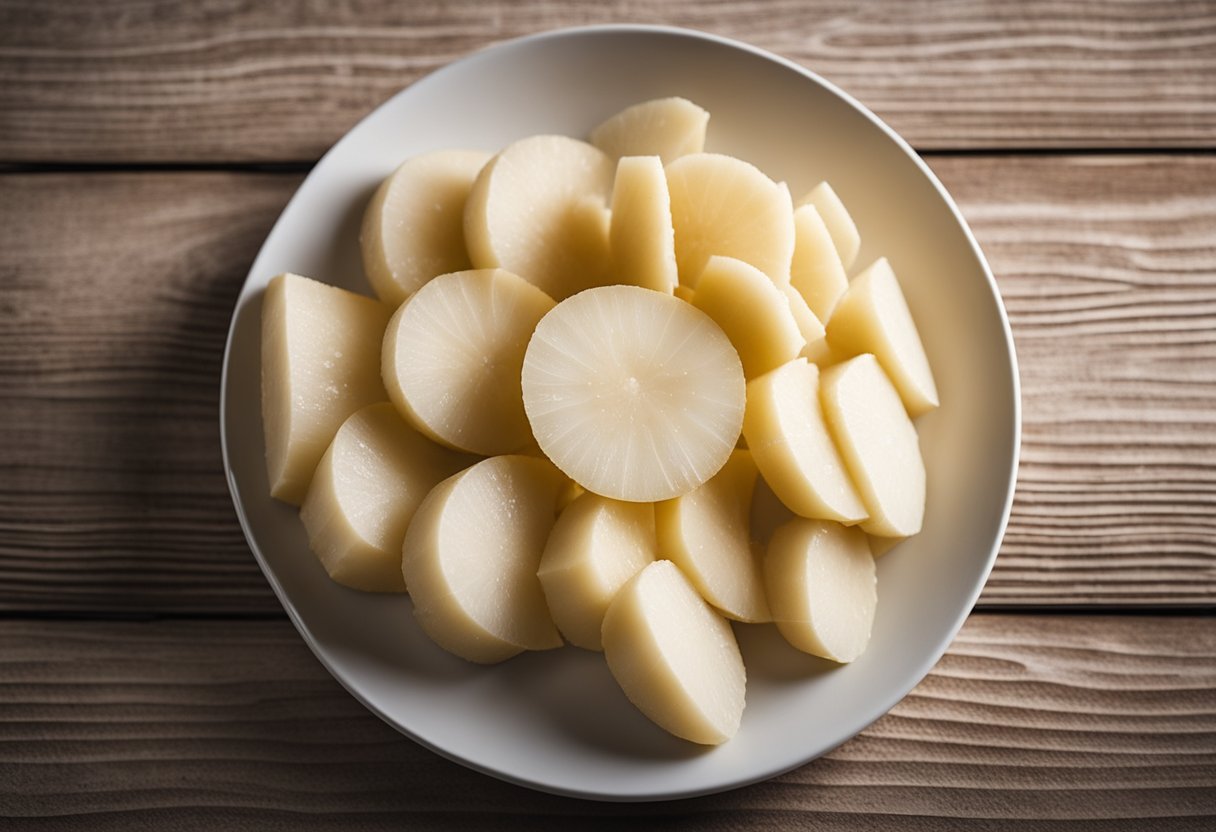
As someone who has cooked and eaten yuca, I can confidently say that it has a unique and delicious taste profile. Yuca has an earthy and slightly sweet taste that is often described as nutty. It has a starchy texture similar to potatoes but with a firmer bite.
When cooked properly, yuca can be incredibly versatile and delicious. It can be boiled, fried, mashed, or baked. The cooking method can affect the taste and texture of yuca. For example, boiled yuca tends to have a softer texture and a milder taste, while fried yuca has a crispy exterior and a nuttier taste.
Some people compare the taste of yuca to sweet potatoes or chestnuts. However, yuca has a distinct flavor that sets it apart from other root vegetables. It is commonly used in Latin American and Caribbean cuisine, where it is often served as a side dish or snack.
In terms of flavor, yellow yuca has a more savory taste profile than white yuca. It pairs well with garlic or garlic sauce and is often used in savory dishes.
On the other hand, white yuca has a slightly sweeter taste that can be enhanced with sugar, honey, or other sweeteners. It is commonly used in desserts and other sweet dishes.
Overall, yuca is a delicious and versatile ingredient that can add flavor and texture to a variety of dishes. Its unique taste profile makes it a popular ingredient in Latin American and Caribbean cuisine.
Texture of Yuca
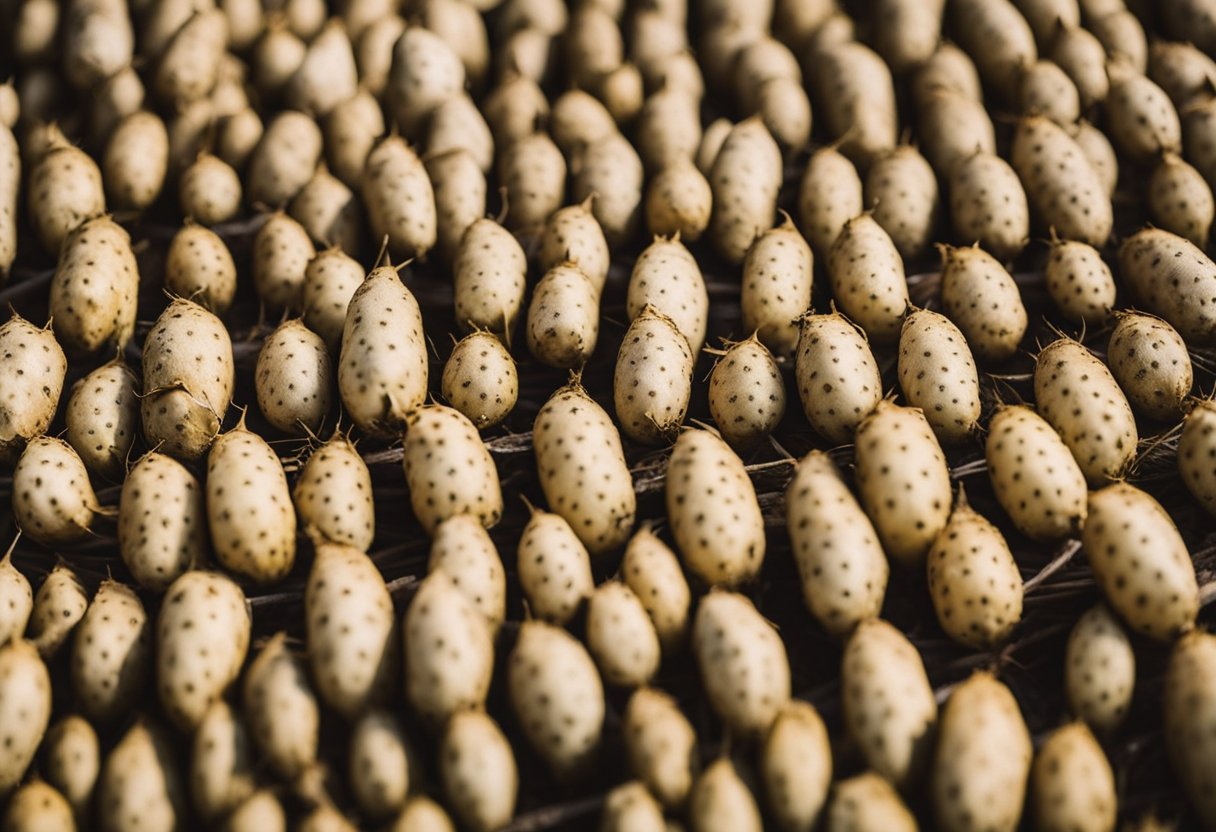
Yuca has a firm texture that is similar to that of a potato. However, it is slightly more fibrous and has a slightly slimy texture when raw. The sliminess disappears when cooked properly.
The texture of yuca depends on how it is prepared. When boiled, it becomes soft and tender, while still retaining its firmness. When fried, it becomes crispy on the outside and soft on the inside. The texture of yuca can also vary depending on the variety of yuca being used.
Yuca is a starchy vegetable, and its texture can be described as starchy and slightly grainy. It is a versatile vegetable that can be mashed, boiled, fried, or roasted. When mashed, it has a smooth and creamy texture that is similar to mashed potatoes.
In summary, yuca has a firm texture that is slightly more fibrous than potatoes. It can be boiled, fried, mashed, or roasted, and its texture varies depending on how it is prepared. It is a starchy vegetable with a slightly grainy texture that becomes soft and tender when boiled and crispy when fried.
Nutritional Information
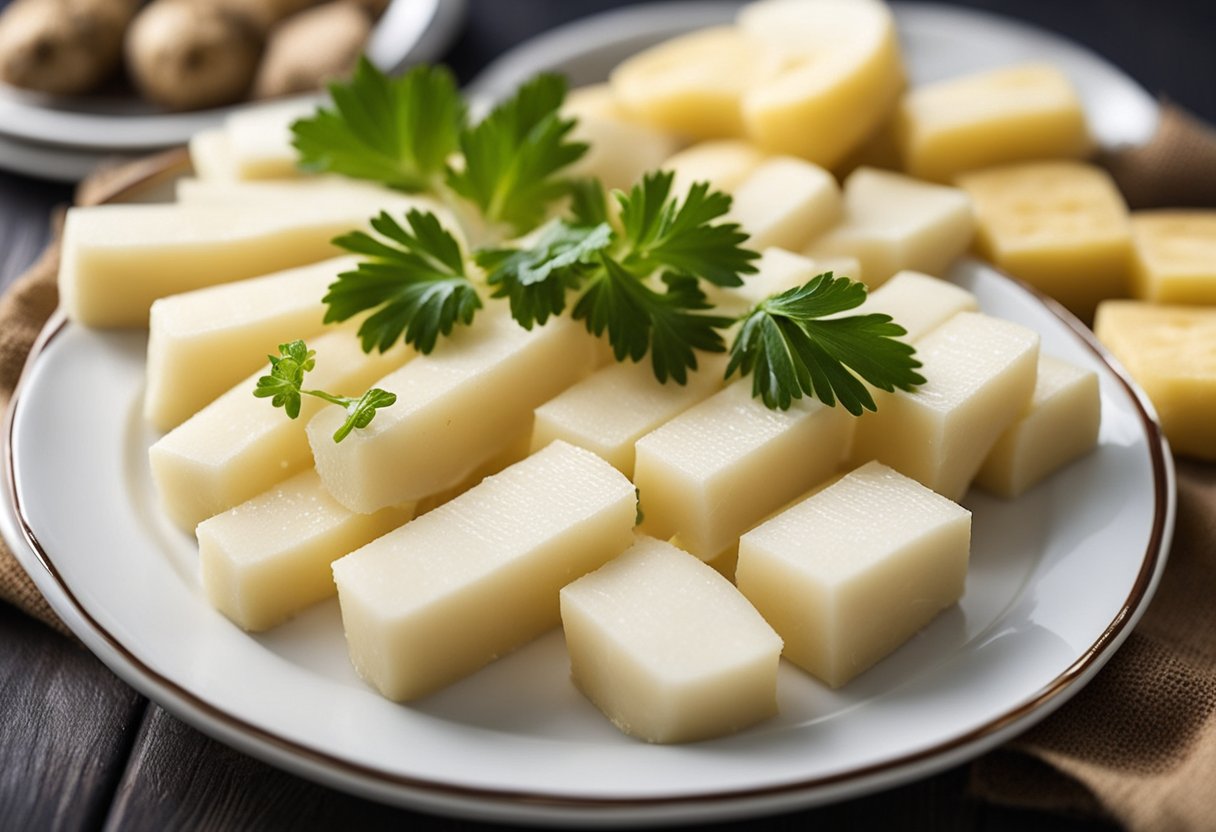
Yuca is a starchy root vegetable that is a great source of carbohydrates and other essential nutrients. A half-cup serving of yuca contains 39 grams of carbohydrates, with the majority coming from starch. It also contains just under 2 grams of fiber and 1.8 grams of naturally occurring sugar.
In addition to carbohydrates, yuca is also a good source of potassium, vitamin C, and folate. A half-cup serving of yuca contains 558 milligrams of potassium, which is important for regulating blood pressure and maintaining heart health.
It also contains 23 milligrams of vitamin C, which is essential for maintaining a healthy immune system and promoting wound healing.
Yuca is also relatively low in fat, with only 0.3 grams of fat per half-cup serving. It is also low in sodium, with only 14 milligrams per serving. This makes it a great option for those who are watching their sodium intake.
Overall, yuca is a nutritious and delicious addition to any diet. It is a good source of carbohydrates, fiber, vitamins, and minerals, and can be prepared in a variety of ways. Whether boiled, fried, mashed, or baked, yuca is a versatile ingredient that can be enjoyed in many different dishes.
Cooking with Yuca
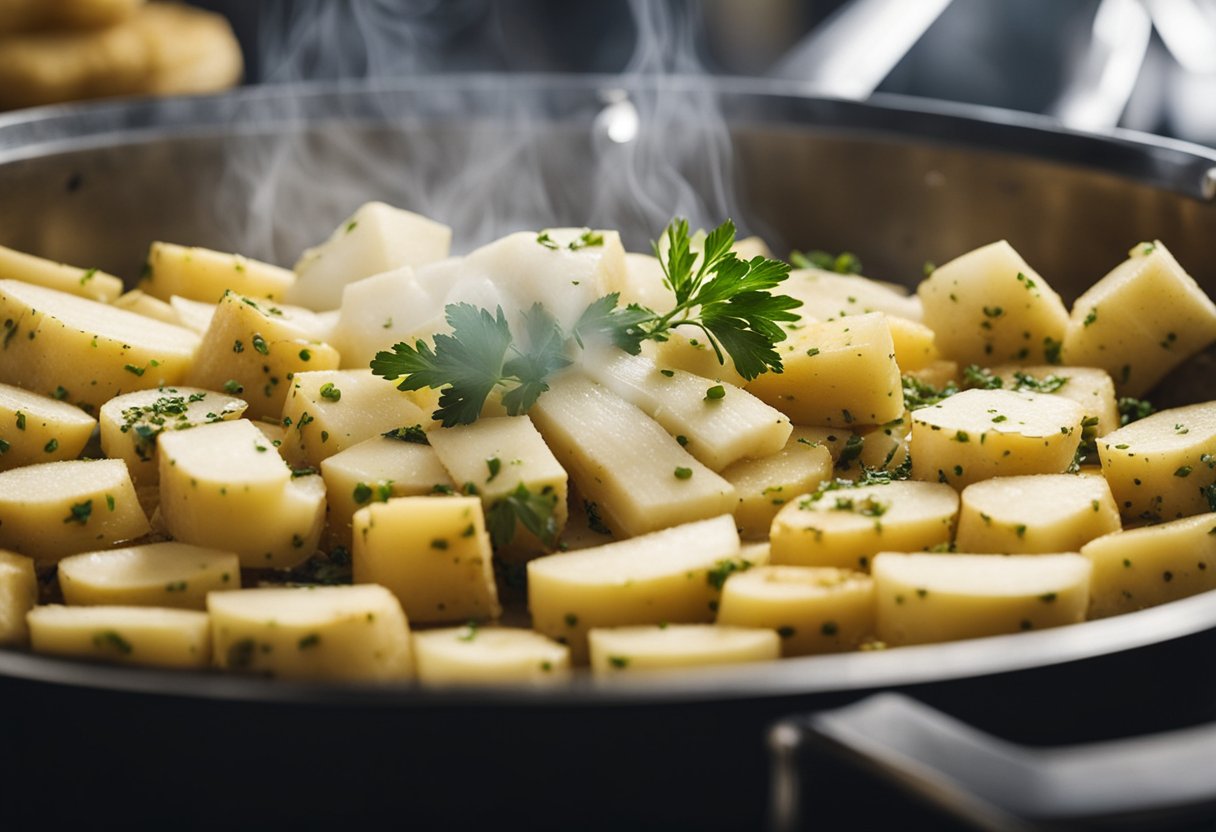
I love cooking with yuca because it is so versatile. You can bake it, boil it, fry it, roast it, mash it, and even make fritters out of it. In this section, I will cover some of the most popular ways to cook with yuca and provide some recipe ideas.
Boiling Yuca
Boiling yuca is one of the most common ways to prepare it. To boil yuca, start by peeling the root and cutting it into chunks. Then, place the yuca in a pot of salted water and bring it to a boil.
Reduce the heat and let it simmer for about 30-40 minutes, or until the yuca is tender. You can tell if it’s done by piercing it with a fork. The yuca should be soft but not mushy.
Boiled yuca can be served on its own as a side dish or used as an ingredient in other recipes. One popular way to eat boiled yuca is to serve it with a garlic and citrus sauce called “yuca con mojo.”
Baking Yuca
Baking yuca is another great way to cook it. To bake yuca, start by peeling the root and cutting it into fries or wedges.
Then, toss the yuca with some oil and seasonings, such as salt, pepper, and garlic powder. Spread the yuca out on a baking sheet and bake it in a preheated oven at 400°F for about 20-25 minutes, or until golden brown and crispy.
Baked yuca fries are a healthier alternative to regular french fries and are a great side dish for burgers or sandwiches. You can also use baked yuca as an ingredient in recipes, such as casseroles or stews.
Frying Yuca
Frying yuca is another popular way to cook it. To fry yuca, start by peeling the root and cutting it into fries or wedges. Then, heat some oil in a deep fryer or a large pot over medium-high heat.
Once the oil is hot, carefully add the yuca to the oil and fry it for about 5-7 minutes, or until golden brown and crispy.
Yuca fries are a popular snack or appetizer in many Latin American countries and are often served with dipping sauces, such as ketchup or aioli. You can also use fried yuca as an ingredient in recipes, such as fritters or empanadas.
Mashing Yuca
Mashing yuca is a great way to create a creamy and flavorful side dish. To mash yuca, start by boiling the root as described above. Once the yuca is tender, drain it and mash it with a potato masher or a fork.
Add some butter, milk, salt, and pepper to taste and continue mashing until the yuca is smooth and creamy.
Mashed yuca is a great alternative to mashed potatoes and can be served as a side dish with any meal. You can also use mashed yuca as an ingredient in recipes, such as casseroles or shepherd’s pie.
Recipe Ideas
Here are some recipe ideas to get you started with cooking with yuca:
- Yuca Fries with Garlic Aioli: Cut yuca into fries, toss with oil and seasonings, and bake or fry until golden brown and crispy. Serve with a homemade garlic aioli dipping sauce.
- Yuca Con Mojo: Boil yuca until tender and serve with a garlic and citrus sauce made with olive oil, garlic, lime juice, and orange juice.
- Yuca and Cheese Fritters: Mash boiled yuca with cheese, eggs, and breadcrumbs, form into balls, and fry until golden brown and crispy.
- Yuca Shepherd’s Pie: Mash boiled yuca with butter and milk and use it as the topping for a classic shepherd’s pie made with ground beef, vegetables, and gravy.
I hope this section has given you some inspiration for cooking with yuca. Whether you boil it, bake it, fry it, or mash it, yuca is a delicious and versatile ingredient that can be used in a variety of recipes.
Yuca as a Substitute
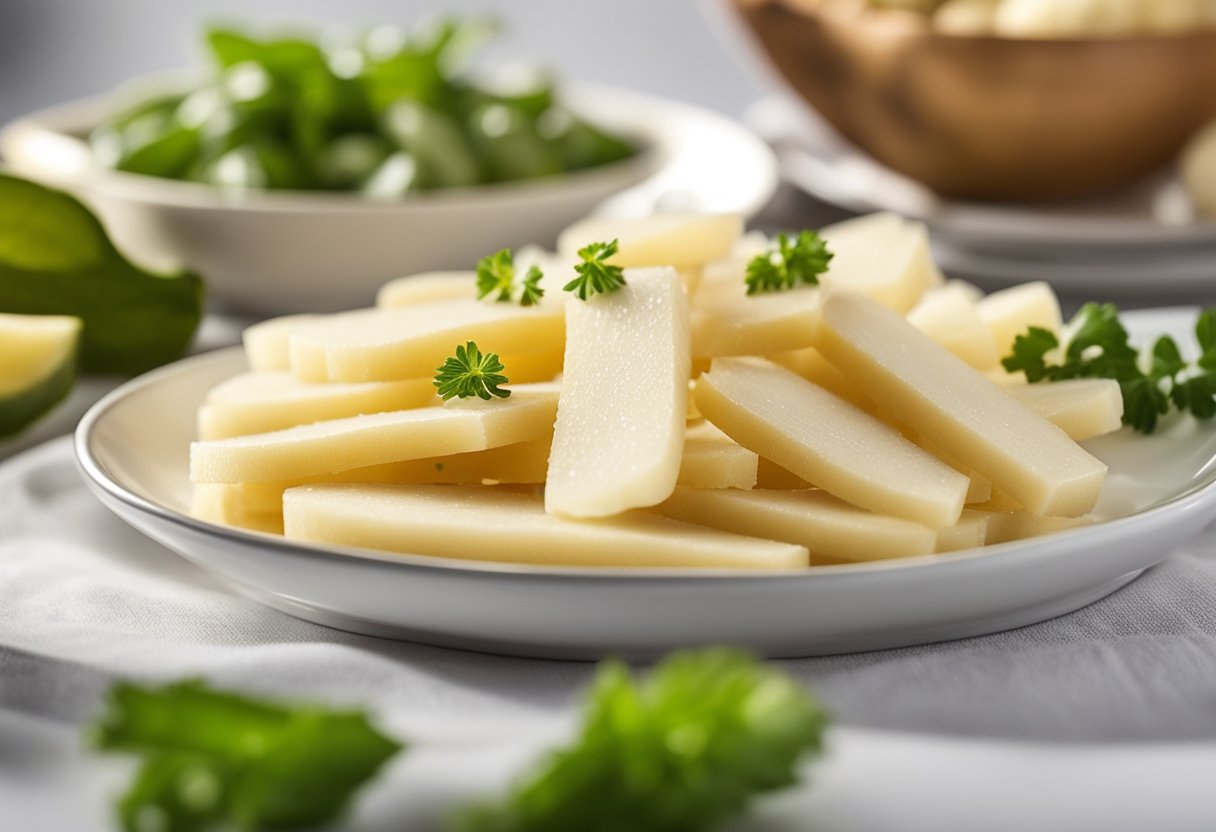
As someone who loves experimenting with new ingredients in the kitchen, I have found yuca to be a versatile and tasty addition to many dishes. But what if you don’t have yuca on hand? Can it be substituted for other ingredients? In this section, I will explore the idea of using yuca as a substitute for potatoes.
Potatoes are a common ingredient in many dishes, but they are not always the healthiest option due to their high carbohydrate content. Yuca can be a great substitute for potatoes as it has a similar texture and taste, but with a lower glycemic index and fewer calories.
When using yuca as a substitute for potatoes, it is important to keep in mind that yuca has a tougher outer layer that needs to be removed before cooking. Once the outer layer is removed, the inside of yuca can be prepared just like potatoes, whether boiled, fried, mashed, or roasted.
One of the benefits of using yuca as a substitute for potatoes is that it has a slightly sweeter taste, which can add a new dimension to your dishes. However, it is important to note that yuca can also have a slightly earthy taste, so it may not be the best substitute for every dish.
Another great alternative to potatoes is sweet potatoes. They are also lower in glycemic index and higher in nutrients than regular potatoes. However, sweet potatoes have a distinct flavor that may not work in every recipe. In this case, yuca can be a great option as it has a more neutral taste.
In summary, yuca can be a great substitute for potatoes in many dishes. It has a similar texture and taste, but with a lower glycemic index and fewer calories. While it may not work in every recipe, it is definitely worth experimenting with to see how it can add a new dimension to your dishes.
Health Benefits of Yuca
As a root vegetable, yuca is a great source of energy and carbohydrates. It is also packed with various nutrients that can provide several health benefits. Here are some of the key health benefits of yuca:
Rich in Nutrients
Yuca is rich in vitamins and minerals, including vitamin C, potassium, and fiber. In fact, a single serving of yuca can provide up to a third of an adult’s daily requirement of vitamin C. Vitamin C is essential for a healthy immune system and can also help your body heal from injuries.
Promotes Digestive Health
Yuca is a good source of dietary fiber, which can help promote digestive health. Fiber adds bulk to your stool, making it easier to pass through your digestive system. This can help prevent constipation and other digestive problems.
May Help Lower Cholesterol
Yuca contains compounds called saponins, which have been shown to help lower cholesterol levels. High levels of cholesterol can increase your risk of heart disease and stroke. Eating yuca as part of a healthy diet may help reduce this risk.
Gluten-Free Alternative
For people with gluten intolerance or celiac disease, yuca can be a great alternative to wheat and other grains. Yuca is naturally gluten-free and can be used in a variety of dishes, from casseroles to baked goods.
May Help Regulate Blood Sugar
Yuca has a low glycemic index, which means it can help regulate blood sugar levels. This makes it a great food choice for people with diabetes or those looking to manage their blood sugar levels.
Overall, yuca is a healthy and nutritious food that can provide several health benefits. Incorporating yuca into your diet can help promote digestive health, regulate blood sugar levels, and reduce your risk of heart disease and stroke.
Yuca in Different Cuisines
Yuca is a versatile root vegetable that is used in many different cuisines around the world. It is a staple food in Latin American and Caribbean cuisine, and is also commonly used in African and Asian cuisine. In this section, I will explore some of the ways that yuca is used in different cuisines.
Latin American Cuisine
Yuca is a popular ingredient in Latin American cuisine, where it is used in a variety of dishes. In Colombia, yuca is often used to make arepas, a type of corn patty.
It is also used in a dish called fried plátanos con yuca, which is made by stuffing plantains with yuca and deep-frying them. In Brazil, yuca is commonly used to make a popular snack called pão de queijo, which is a type of cheese bread.
African Cuisine
Yuca is also a staple food in many African countries, where it is known as cassava. In Nigeria, cassava is often used to make a popular snack called garri, which is made by grinding cassava into a fine powder and then frying it.
In Ghana, cassava is used to make a popular dish called fufu, which is a starchy side dish that is often served with soup or stew.
Asian Cuisine
In Asia, yuca is often used in desserts. In the Philippines, yuca is used to make a dessert called ube halaya, which is a sweet pudding made from mashed yuca, coconut milk, and sugar.
In Thailand, yuca is used to make a popular snack called manioc chips, which are deep-fried yuca chips that are often served with ketchup or garlic sauce.
Gluten-Free Alternative
Yuca is a great gluten-free alternative to wheat flour. It can be used to make yuca flour, which is a popular ingredient in gluten-free baking. Yuca flour can be used to make everything from bread to cakes and cookies.
Versatile Flavor
Yuca has a unique flavor that is earthy, slightly sweet, and nutty. It has a texture similar to that of a potato, but with a slightly firmer bite. Yuca can be used in a variety of dishes, from savory to sweet.
Other Uses
Yuca can also be used to make cassava flour, which is a popular gluten-free alternative to wheat flour. It can also be used to make chips, which are a popular snack in many countries. Yuca can also be baked like a potato and served as a side dish with olive oil and garlic.
In conclusion, yuca is a versatile root vegetable that is used in many different cuisines around the world. It can be used in dishes ranging from savory to sweet, and is a great gluten-free alternative to wheat flour. Whether you are looking for a new side dish or a unique snack, yuca is definitely worth trying.
Shopping for Yuca
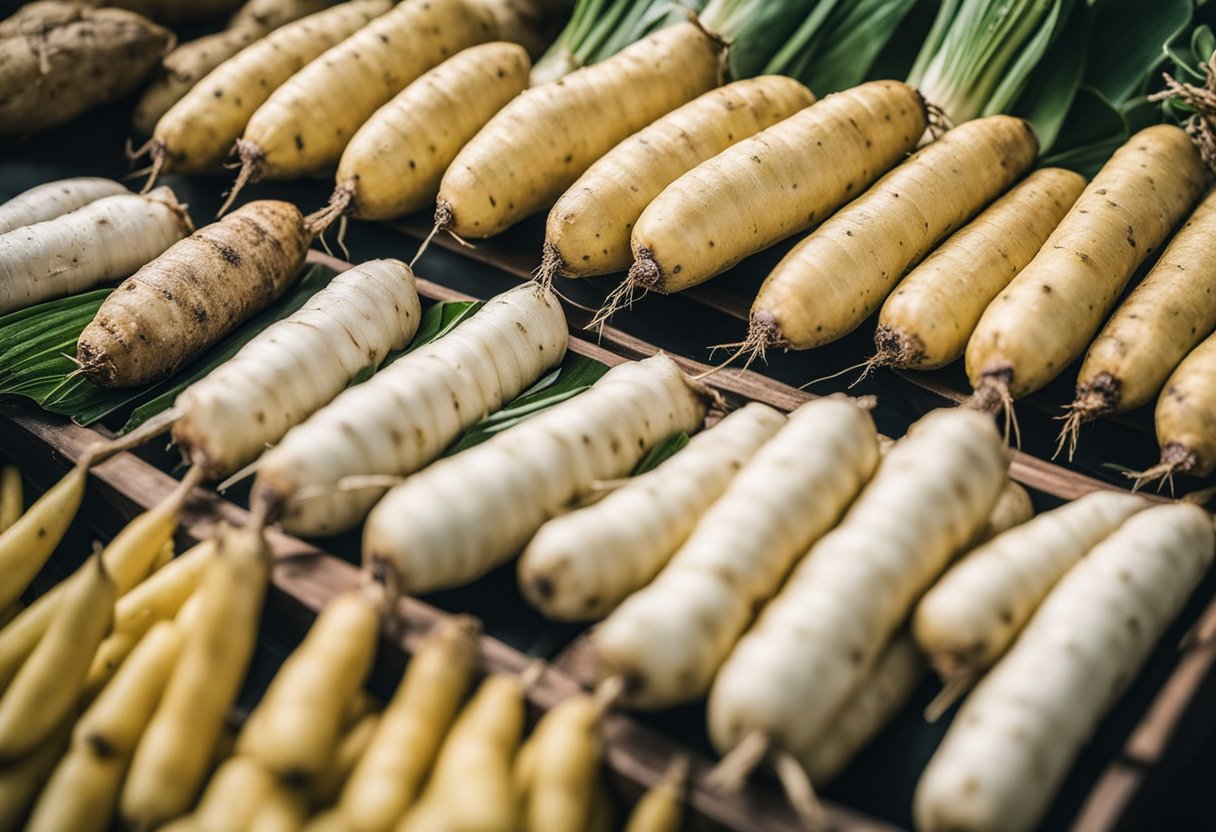
When shopping for yuca, also known as cassava root, it is important to choose the right one to ensure you get the best taste and texture. Here are some tips that I follow when shopping for yuca:
- Look for yuca with a firm and smooth skin. The skin should not have any blemishes or bruises, as this can indicate that the yuca is not fresh.
- Choose a yuca that is heavy for its size. This indicates that it is juicy and has a high water content, which is important for cooking.
- If you are buying yuca from a grocery store, you may find it in the produce section. It may also be available in the frozen section, which is a good option if fresh yuca is not available.
- When you are ready to use the yuca, you will need to peel it. You can use a vegetable peeler or a sharp knife to remove the skin. Be careful not to remove too much of the flesh, as this can affect the taste and texture of the yuca.
Overall, shopping for yuca is easy once you know what to look for. By following these tips, you can ensure that you get the best quality yuca for your recipes.
Frequently Asked Questions
How does yuca taste compared to potatoes?
Yuca has a unique flavor profile that is slightly sweet and nutty, with a slightly fibrous texture. It tastes similar to potatoes but has a more earthy, nutty taste. Some people describe it as having a mild nutty flavor with hints of sweet potato-like sweetness.
What are some ways to cook yuca?
Yuca can be boiled, fried, baked, or mashed. It is a versatile ingredient that can be used in a variety of dishes. Boiled yuca can be served as a side dish or used in stews and soups.
Fried yuca is a popular snack and can be served with dipping sauces. Baked yuca can be used as a substitute for potatoes in dishes like casseroles and shepherd’s pie. Mashed yuca can be used as a side dish or as a base for other dishes.
What are the health benefits of yuca?
Yuca is a good source of carbohydrates, fiber, and some vitamins and minerals. It is low in fat and calories and is a good source of energy.
Yuca also contains antioxidants that can help protect against disease and inflammation. It is also gluten-free, making it a good option for people with celiac disease or gluten sensitivity.
What is the difference between yuca and yucca?
Yuca (or cassava) is a starchy root vegetable that is native to South America, while yucca is a type of plant that is native to North America.
The two are often confused because of their similar names, but they are not the same thing. Yuca is used as a food source, while yucca is often used for ornamental purposes.
Do fried yuca taste like french fries?
Fried yuca has a similar texture to french fries, but the taste is slightly different. Yuca has a nuttier flavor than potatoes, so the taste will be slightly different. However, if seasoned and prepared correctly, fried yuca can be just as delicious as french fries.
Is yuca a good substitute for potatoes in recipes?
Yes, yuca can be used as a substitute for potatoes in many recipes. It has a similar texture and can be prepared in many of the same ways.
However, it has a slightly different flavor profile, so the taste may be slightly different. If you’re looking for a gluten-free or lower-carbohydrate alternative to potatoes, yuca is a great option.


